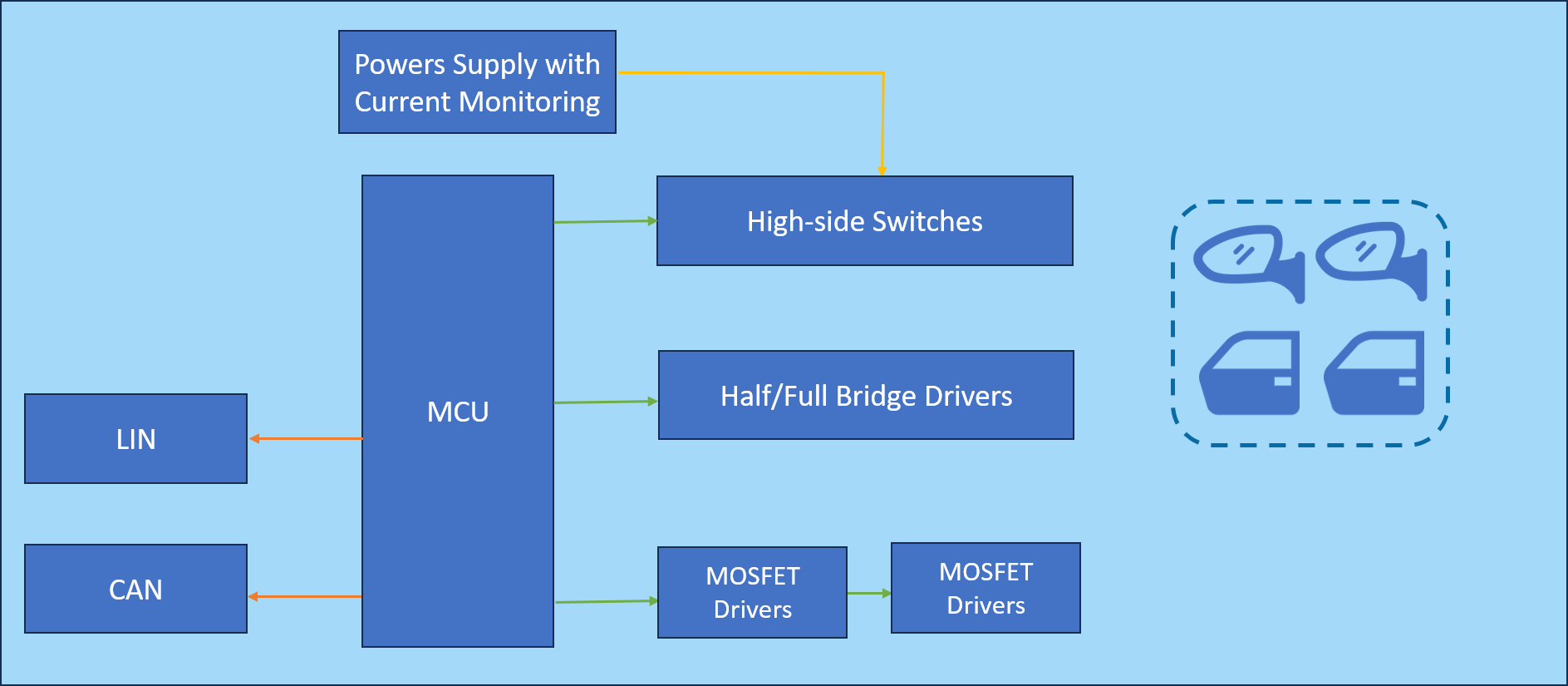

As an automotive enthusiast, I have always been fascinated by the intricate systems that make modern vehicles function seamlessly. One such system that often goes unnoticed but plays a crucial role in ensuring our safety and convenience is the door control unit (DCU). In this article, we will delve into the inner workings of this vital component, exploring its functionality, architecture, and the challenges faced by engineers during its development.
The door control unit, also called a Door Control Module (DCM), is a vital part of a vehicle's electronic control system, responsible for managing various aspects related to door operations. From unlocking and locking mechanisms to window control and anti-theft features, the DCU serves as the central hub, ensuring seamless integration and operation of these essential functions.
Historically the door functions were handled by the body control module (BCM). But with the advent of domain architecture in the automotive E/E system, the management of door is handled by specialized units called the door control unit or the door control module.
Based on the vehicle architecture and OEM preferences, there could be one or more DCUs. Some possible scenarios are:
Irrespective the count, the door control unit (DCU) oversees and regulates the operations of a vehicle's doors, including locking, unlocking, and various auxiliary functions. It acts as the command center for all door-related activities, interpreting signals from various input sources and executing the appropriate actions.
At its core, the DCU is a specialized computer system designed to manage the intricate interactions between mechanical components, electrical systems, and user inputs. It seamlessly integrates with other vehicle control modules, such as the body control module (BCM) and the anti-theft system, to ensure a cohesive and secure operation.
The door control module (DCM) is a multifaceted component, responsible for a wide range of functions that contribute to the overall user experience and safety of a vehicle. Let's explore some of its key functions:
The DCM manages the locking and unlocking mechanisms of all doors, including the trunk or hatch. It receives input signals from various sources, such as the key fob, door handles, or interior controls, and executes the appropriate actions to secure or grant access to the vehicle. It manages child safety locks and door handle sensors as well.
In many modern vehicles, the DCM is responsible for controlling the operation of power windows. It interprets user inputs from switches or automatic functions (like anti-pinch protection) and regulates the movement of the window motors accordingly.
The DCM also takes care of mirror adjustments as well. Activated over switches connected remotely or programmatically, the DCM adjusts position of side view mirrors based on user preference. It also performs mirror heating functions in high end models.
DCM plays a crucial role in the vehicle's anti-theft system. It communicates with other modules, such as the engine control unit (ECU) and the body control module (BCM), to ensure that the vehicle cannot be started or driven without proper authentication.
In some vehicles, DCM may also control certain exterior lighting functions, such as the courtesy lights or puddle lamps, which illuminate the area around the doors when they are opened or unlocked. Blind spot illuminations along with door handle lighting are managed too.
The hardware architecture of a door control unit (DCU) is designed to handle the complex tasks and interactions required for managing door-related operations as captured in the below diagram.

Hardware Architecture of a DCU
Let's explore the key components that make up this intricate system:
At the heart of the DCU lies a powerful microcontroller unit (MCU), which serves as the brain of the system. This specialized computer chip is responsible for executing the programmed instructions, processing input signals, and generating the appropriate output signals to control various components.
To control the physical components, such as door locks, window motors, and exterior lighting, the DCU utilizes relays and motor driver circuits. These components translate the digital signals from the MCU into the appropriate electrical signals required to actuate the mechanical components via motors.
The DCU features a variety of input/output interfaces to communicate with various sensors, switches, and other control modules within the vehicle. These interfaces may include analog-to-digital converters (ADCs), digital input/output ports, etc.
Most of the commands to the DCU is received over vehicle communication interface such as CAN or LIN. Necessary transceivers are present in the system to support reliable communication.
The DCU incorporates diagnostic and monitoring circuits to continuously assess its own performance and the status of connected components. These circuits enable the DCU to detect and report any potential issues, facilitating maintenance and troubleshooting.
The DCM over communication interfaces, such as CAN (Controller Area Network) or LIN (Local Interconnect Network), receives signals from other control modules within the vehicle, such as the body control module (BCM) or the anti-theft system. Based on the command received, it activates the necessary drivers and activates the systems. For example, motor drivers regulate the direction and speed of the window motors based on user inputs or automatic functions, such as anti-pinch protection. It also continuously assesses its own performance and the status of connected components, detects and reports any potential issues, facilitating maintenance and troubleshooting.
Thus, the door control unit (DCU) acts as a central hub for several features, making the operation of doors more convenient and safer. While DCUs provide easy and convenient control of various door-related functions, features like anti-pinch protection and child safety locks enhance passenger safety. Also, by centralizing control, DCUs simplify the wiring and reduce the number of individual components in the doors. Fewer components and a more streamlined design leads to improved reliability.
The Door Control Unit plays a vital role in modern vehicles by managing a variety of essential functions within the door zone. It contributes to a more comfortable, safer, and efficient driving experience.

Electrical/electronic architecture, also known as EE architecture, is the intricate system that manages the flow of electrical and electronic signals within a vehicle.